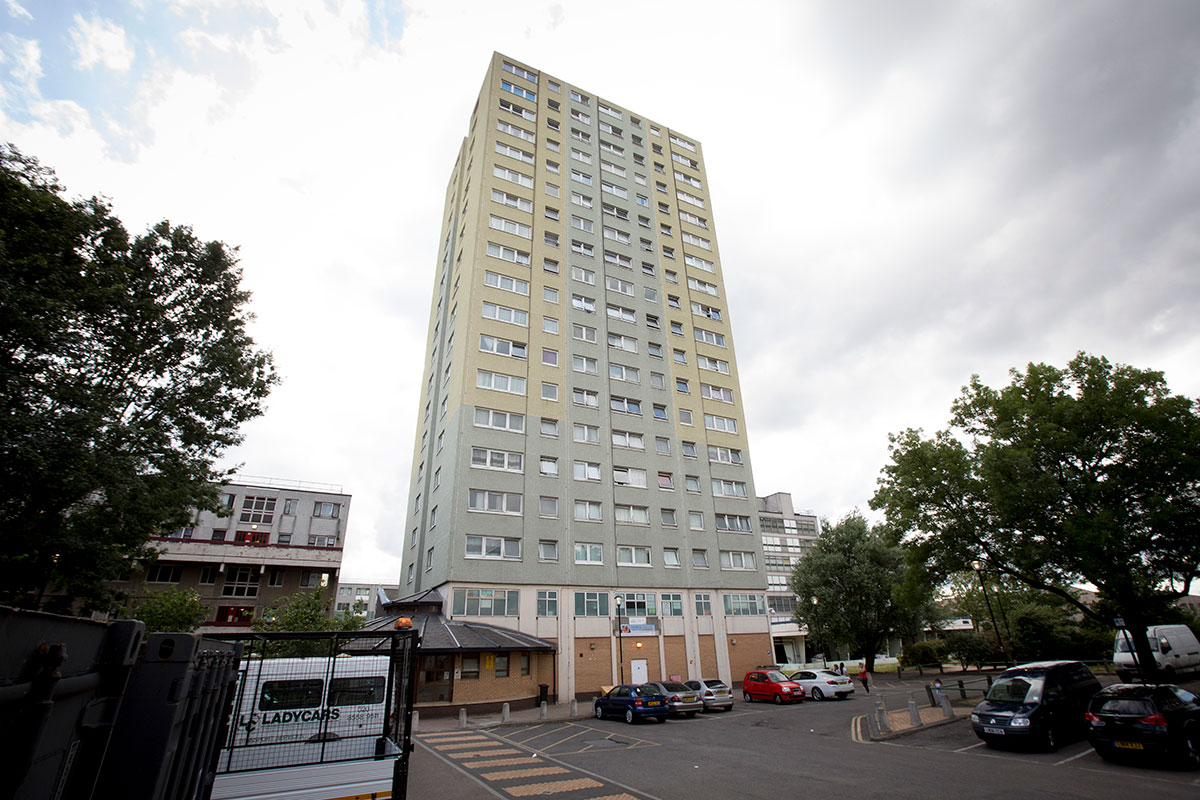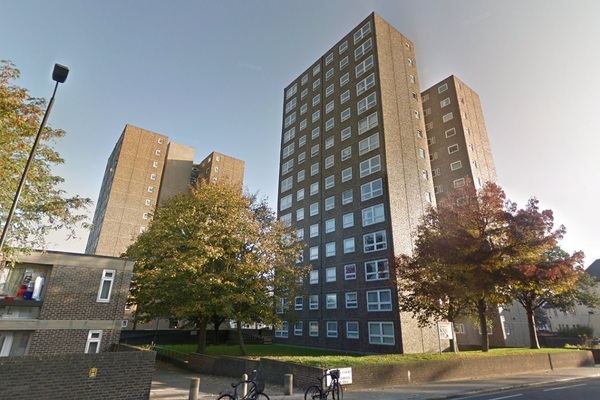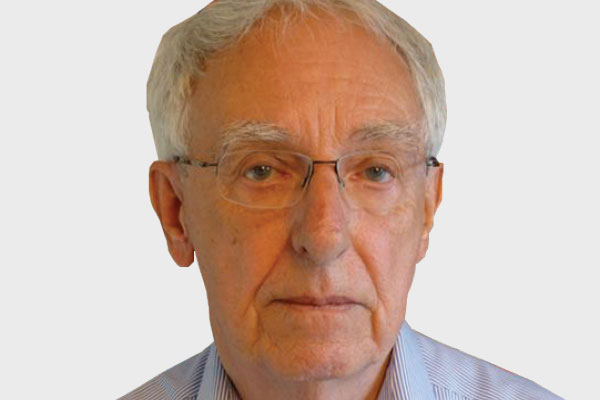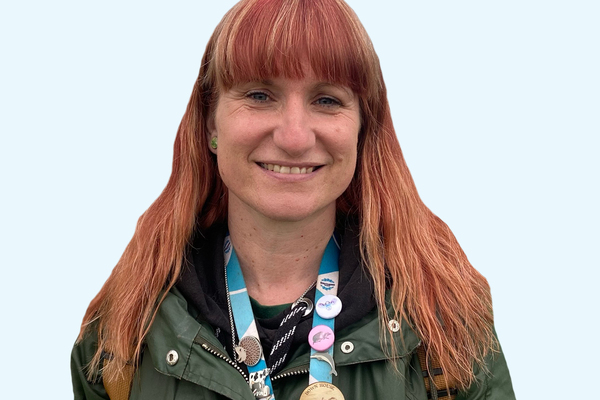Experts criticise council’s decision to keep Ronan Point-style blocks
Experts have poured scorn on a London council’s decision to retain two tower blocks built using the same system as Ronan Point where structural issues have been uncovered.
Tower Hamlets Council has agreed to spend £8.1m carrying out urgent strengthening works on Brewster House and Malting House on the Barley Mow Estate over fears they could collapse in an explosion.
It has already set aside £3.4m to remove and replace dangerous cladding from the 14-storey blocks, and the work is not far from completion.
The towers were completed in 1968 by Taylor Woodrow Anglian using the Larsen-Nielsen large panel system (LPS) method.
In the same year, 22-storey Ronan Point in Newham – built using the same system – partially collapsed following a gas explosion, killing four people.
Structural issues with several LPS blocks have been uncovered across the country over the past two years, with most landlords opting to demolish and redevelop the sites.
Prompted by government advice to check LPS blocks, Tower Hamlets Council commissioned a structural survey on the Barley Mow blocks during the cladding works completed in July 2018.
Wilde Carter Clack, which carried out the tests, concluded that a “severe non-piped gas explosion” in the blocks could lead to “disproportionate collapse”.
Brewster House and Malting House already underwent strengthening work in 1990.
An officer’s report to the council’s cabinet warned that the blocks urgently need “intrusive structural strengthening, particularly as the buildings were at risk of progressive structural collapse in the event of an explosion and possibly following an extremely intense fire”.
“Given the considerable concern across the UK regarding the safety of large concrete panel blocks, it is vital that the borough minimise any risk in this area by progressing the works,” it added.
The works include drilling steel rods into every floor slab as well as external strengthening measures, and are expected to take 18 months.
But Arnold Tarling, a chartered surveyor and building safety expert, told Inside Housing: “I don’t think the engineer’s report is correct.
“It doesn’t allow for twisting in high wind and it doesn’t appreciate the degree of the risks in a fire. How can they say you can repair it when all the other engineers are saying you can’t?
“The most economic option now would be to demolish them and rebuild them.
“These buildings were poor when they built them and the strengthening work was not good enough. In another 20 years how do you know there won’t be issues again?”
Sam Webb, an architect who has studied LPS blocks for more than 40 years, said: “I would agree with those points that Arnold made. If you overload the floor slabs they could collapse. This is likely in a fire because they will expand.
“I would agree that it isn’t actually worth repairing them but they’re stuck between a rock and a hard place because they’ve got hundreds of people living in these buildings and haven’t got any money to provide alternative accommodation and the government are not giving them any extra money.”
Wates has been awarded a £6.3m contract through the Better Neighbourhoods framework to carry out the works. It is already handling cladding replacement at the blocks.
A risk assessment by Curtins concluded that it would be safe for residents to remain in the blocks during the repairs, but that they will need to be temporarily moved out from some areas as the work progresses.
Leaseholders – which account for 32 of the 112 affected flats – face bills of up to £76,000 to help pay for the works, or £2m combined.
They were not asked to pay for the cladding work, which has been suspended pending the structural repairs.
Council officers are also exploring the possibility of spending £9.6m purchasing the leasehold homes, funded by up to £2.7m from Right to Buy receipts and General Fund borrowing.
The officer’s report acknowledged that the impact on leaseholders living in the towers “will be considerable, on a financial and personal level”, with the money offered to buy their flats “possibly not sufficient to enable them to purchase again in the local second-hand property market”.
It added that demolishing and redeveloping the blocks would cost between £25m and £40m and would be “unviable” even if all the additional homes were for full market sale, while redeveloping the whole estate including low-rise blocks “would further delay the structural works needed”.
“In line with normal practice, the leaseholders of the remaining 32 flats will be required to pay for their share of the works,” a spokesperson for Tower Hamlets Council said.
“We recognise the likely costs involved are significant and that this is a worrying and stressful situation for those involved.
“We are arranging to speak to all leaseholders individually in the coming weeks ahead of a residents’ meeting later this month.
“We want to understand the views of all concerned before making a final decision on how to proceed.”
Leaseholders over 65 will be allowed to defer payment until their flat is sold or transferred, while others will be given five years to pay.
Danielle Gregory, a resident of an LPS block in Southwark and part of the Tower Blocks UK group, said: “My concern from a tenant’s point of view is that they have done this strengthening before and it obviously hasn’t worked.
“Are they going to test it after the strengthening to make sure the buildings do meet the minimum requirements?
“Even if they are able to make the structure meet the building regulations, what about the fire safety?
“It’s up to the council to come up with a permanent fire-stopping solution and they have to keep checking to make sure it stays in place when the building moves.”
Ronan Point: 50 years on
We have published a series of articles to mark the 50th anniversary of Ronan Point:
Are tenants being listened to on building safety? Tower block safety campaigner Frances Clarke questions whether Dame Judith Hackitt is really listening to tenants
The tower blocks that time forgot Fifty years ago councils were told to assess high-rise buildings that were similar to Ronan Point and strengthen them where necessary. So why are problems with some of the blocks still emerging?
One man’s 50-year battle to improve tower block safety Meet architect Sam Webb, who has been campaigning on safety in tower blocks since the disaster at Ronan Point
The worrying legacy of a disaster Jules Birch reflects on what we can learn from the Ronan Point disaster
Watch a new film about Ronan Point Filmmaker Ricky Chambers, whose grandparents and mother lived in Ronan Point, has made a film telling people’s stories of the ill-fated block. Watch the film and read Mr Chambers’ comments on why he made it
The dangers of large panel system construction Building safety expert Sam Webb explains why the system of construction used at Ronan Point was flawed, and how it was used in other buildings still occupied today












